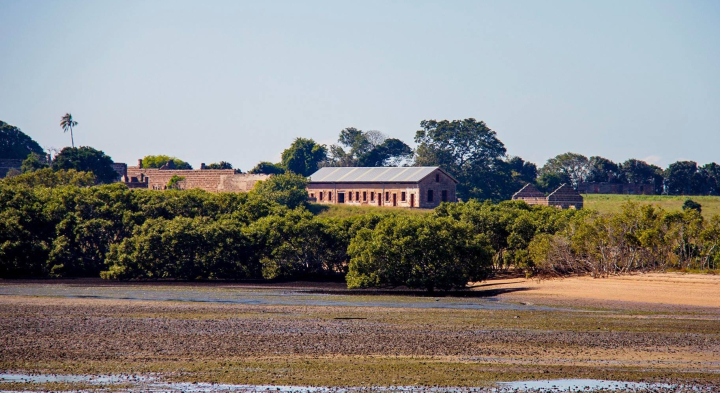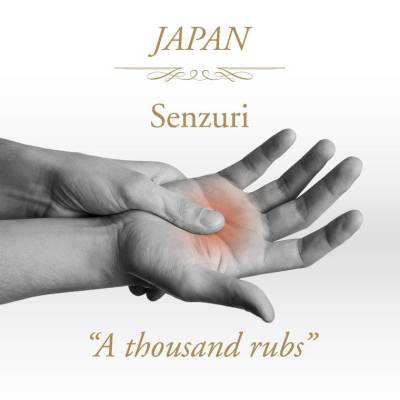‘Queenslander’ Saturday 31 August 1878Fine arts , Water Colours
..St Helena sends two remarkable exhibits … One is a drawing in water colour of the island, buildings, &c, seen under conditions of light and shade, which would tax to the utmost artistic powers of a high order. The result is so far successful as to show that the exhibitor possesses great natural ability which it ought to be worth his while to cultivate…
Little did that reporter know that the artist had been trying to cultivate his talent … with very little success!
 St Helena Island Penal Establishment, 1878 by Charles Winn. Image courtesy of Museum of Brisbane
St Helena Island Penal Establishment, 1878 by Charles Winn. Image courtesy of Museum of Brisbane
Had vagrancy not been a crime punishable by imprisonment in 1878, 33 year old Charles Winn would probably not have set foot on St Helena Island. But for a small window of 3 months, he was sent to prison with Hard Labour, as a consequence of vagrancy laws modelled on the United Kingdom’s Vagrancy Act of 1824. According to these laws, it was an offence to sleep rough, beg or solicit on streets or have no visible means of support. Ironic, as Winn was obviously a talented, skilled man.
Charles was known as a draftsman and artist, who had worked in Sydney before arriving in Brisbane. Unfortunately we know this as he was sent to prison in in 1867 for stealing a book from the Sydney Mechanics School of Arts’ library! It appears that for over a decade, Winn was finding it difficult to get his creative work appreciated and could not make ends meet on his earnings from painting and drawing. But in prison, hope finally loomed:
… The men have their leisure hours which many of them employ very advantageously. One man has produced two admirable water colour drawings – one of St Helena itself … The artist is in St Helena for vagrancy! He was utterly unable to make his talents appreciated. Mr Barron, however, saw what the argus-eyed public did not, and the man will not leave prison without a chance to do better…
Telegraph’ Wednesday 11 September 1878
And so it appears that Winn’s talents began to be noticed. His painting was entered in the Brisbane Fine arts exhibition and Visiting Justice T. Barron himself has a watchful eye on Winn’s future. So impressed were those in charge of St Helena’s welfare, that the painting was kept, and handed to William Gall as a gift on his retirement from the position of Comptroller General of Prisons in 1934. Gall was known as an authority on Australiana and it became part of his collection.
Sometime after this, it disappeared from view and memory. Fast forward to 2012 and a chance meeting between the curator of a new exhibition ‘The many lives of Moreton Bay,’ under development at the Museum of Brisbane and Trisha Anderson, Granddaughter to William Gall. The conversation about Moreton Bay triggered Trisha’s memory and from the back of the wardrobe came Charles Winn’s painting, where it had been wrapped and stored for 30 or 40 years.
The discovery sent ripples of excitement through anyone connected with St Helena, as it was the first and only known painting of the working prison. Signed by the artist… whom it was discovered was a prisoner. The likes of this watercolour had not been seen before, and it was exciting to realise the clarity with which it depicted an early part of St Helena’s prison history, detailing patterns of construction, clearing, productivity and daily activity.
St Helena Island is now a part of the Museum of Brisbane, thanks to Trisha Anderson’s donation of the painting to them. Charles Winn is finally recognised for his talent and skill as an artist. And the St Helena Community continues to expand thanks to spontaneous encounters, chance and luck.
 St Helena Prison stockade 2017. Image by Amanda Thepanda
St Helena Prison stockade 2017. Image by Amanda Thepanda
Featured image by Mette and Niels Juel (Veloshotz)
Advertisements Share this:




